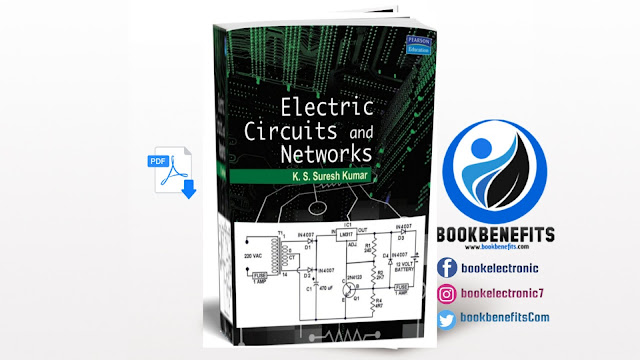Download Electric Circuits and Networks PDF
Electric Circuits and Networks by K. S. Suresh Kumar PDF
Picture Of the Book:
About Of The Book:
This book is more than a textbook on electric circuits. It is a veritable learning reference that presents electric circuit analysis in a simplified manner, without sacrificing rigor and thoroughness. The book is a sequel to the author’s Electric Circuits and Signals, CRC Press, 2008.
The electric signal material has been omitted and circuit analysis is treated in a more simplified and expanded form. The book differs from other textbooks on electric circuits in its pedagogy and
organization, as expounded later, particularly in the following respects.
It is emphasized from the very beginning that circuits obey two universal conservation laws: conservation of energy and conservation of charge, which imply, respectively, conservation of power and conservation of current. Kirchhoff’s laws are simply an expression of these conservation laws and not some sacrosanct laws that are peculiar to electric circuits. They are convenient to apply in lieu of the more fundamental conservation laws because they are linear in voltage and current.
Primary Objective:- To serve as a textbook that will meet students’ and instructors’ need for
a two- or three-semester course on electrical circuits and networks for undergraduate
students of electrical and electronics engineering (EE), electronics and communications
engineering (EC), and allied streams. This textbook introduces, explains and reinforces all
the basic concepts of analysis of dynamic circuits in time-domain and frequency-domain.
Secondary Objective:- To use circuit theory as a carrier of the fundamentals of linear system
and continuous signal analysis so that the students of EE and EC streams are well- prepared
to take up a detailed study of higher level subjects like analog and digital electronics, pulse
electronics, analog and digital communication systems, digital signal processing, control
systems, and power electronics at a later stage.
Electric Circuits in EE and EC Curricula
The subject of electric circuits and networks is currently covered in two courses in Indian
technical universities. The introductory portion is covered as a part of a course offered in the
first year of undergraduate program. It is usually called basic electrical engineering. About
half of the course time is devoted to Introductory Circuit Theory covering the basic
principles, DC circuit analysis, circuit theorems and single frequency sinusoidal steady-state
analysis using phasor theory. This course is usually a core course for all disciplines.Therefore,
it is limited very much in its content and depth as far as topics in circuit theory are con-
cerned. The course is aimed at giving an overview of electrical engineering to undergraduate
students of all engineering disciplines.
Students of disciplines other than EE and EC need to be given a brief exposure to
electrical machines, industrial electronics, power systems etc., in the third semester. Many
universities include this content in the form of a course called electrical technology in the
third semester for students of other engineering disciplines. This approach makes it necessary
to teach them AC steady-state analysis of RLC circuits even before they can be told about
transient response in such circuits. The EE students, in fact, need AC phasor analysis only
from the fourth or fifth semester since they start on electric machines and power systems
Content of The Book:
Part I: Basic Concepts in Circuit Analysis
Chapter 1 Preliminaries to Circuit Analysis
Chapter 2 Fundamentals of Resistive Circuits
Chapter 3 Circuit Equivalence
Chapter 4 Circuit Theorems
Chapter 5 Circuit Simplification
Chapter 6 Circuit Equations
Chapter 7 Capacitors, Inductors, and Duality
Chapter 8 Sinusoidal Steady State
Chapter 9 Linear Transformer
Chapter 10 Ideal Transformers
Chapter 11 Basic Responses of First-Order Circuits
Chapter 12 Basic Responses of Second-Order Circuits
Part II: Topics in Circuit Analysis
Chapter 13 Ideal Operational Amplifier
Chapter 14 Frequency Responses
Chapter 15 Butterworth and Active Filters
Chapter 16 Responses to Periodic Inputs
Chapter 17 Real, Reactive, and Complex Power
Chapter 18 Responses to Step and Impulse Inputs
Chapter 19 Switched Circuits with Initial Energy Storage
Chapter 20 Convolution
Chapter 21 Properties of the Laplace Transform
Chapter 22 Laplace Transform in Circuit Analysis
Chapter 23 Fourier Transform
Chapter 24 Two-Port Circuits
Chapter 25 Balanced Three-Phase Systems
Information Of The Book:
File Name :Electric Circuits and Networks
Language :English
File Size : 18.7 MB
By :K. S. Suresh Kumar

